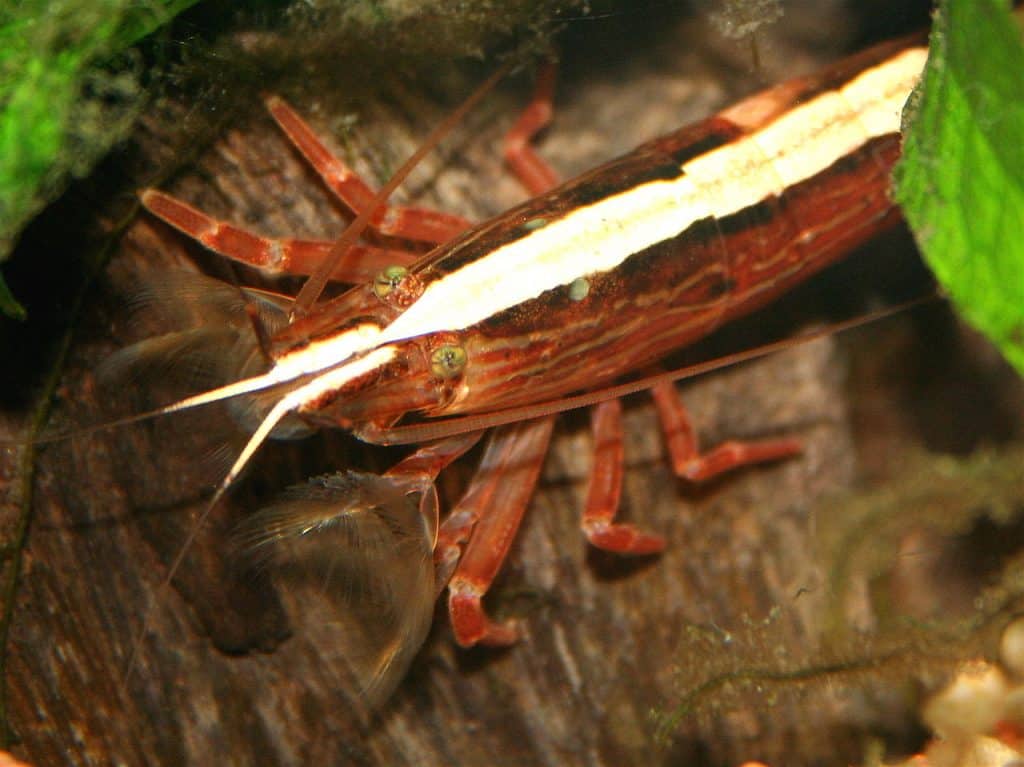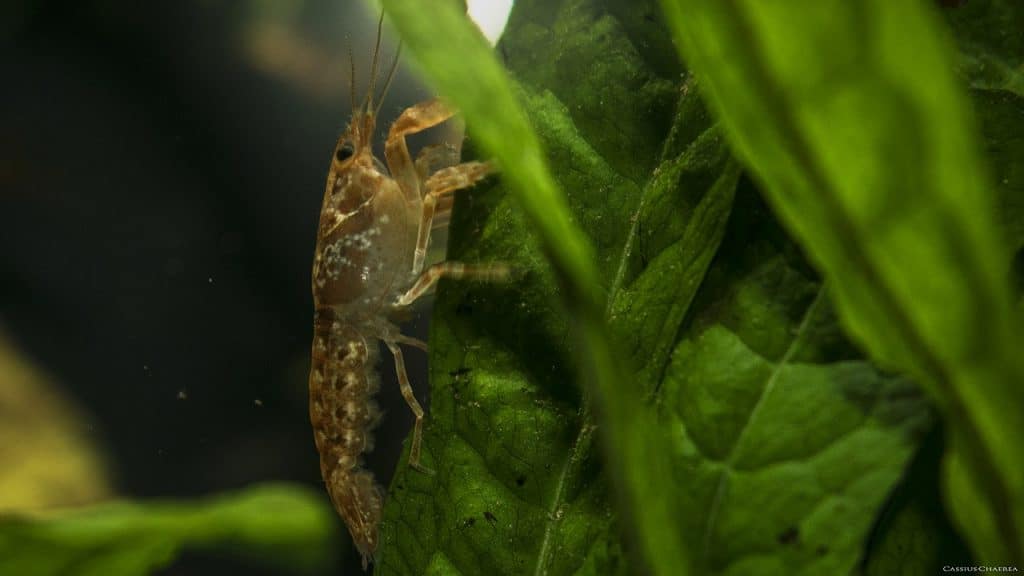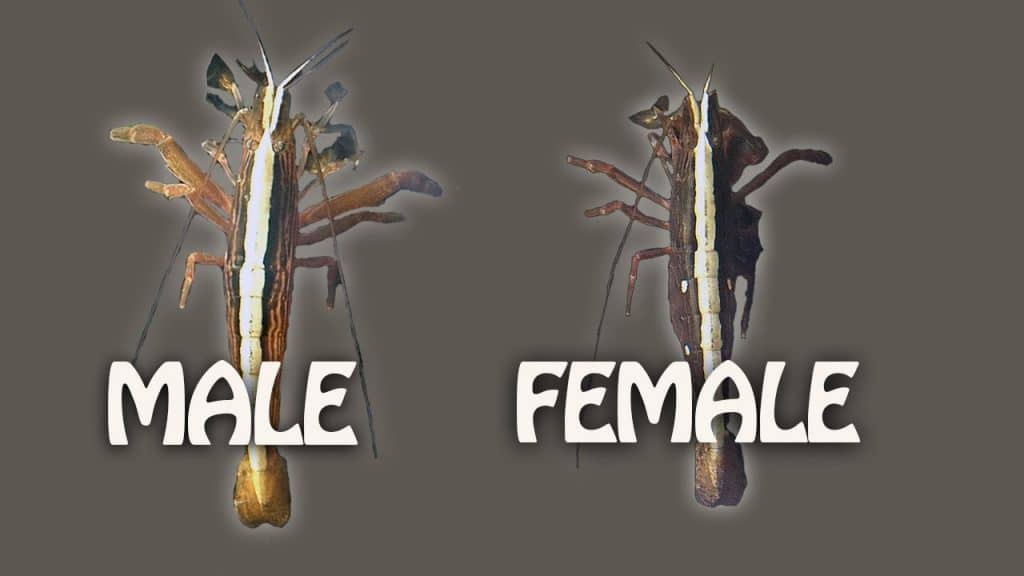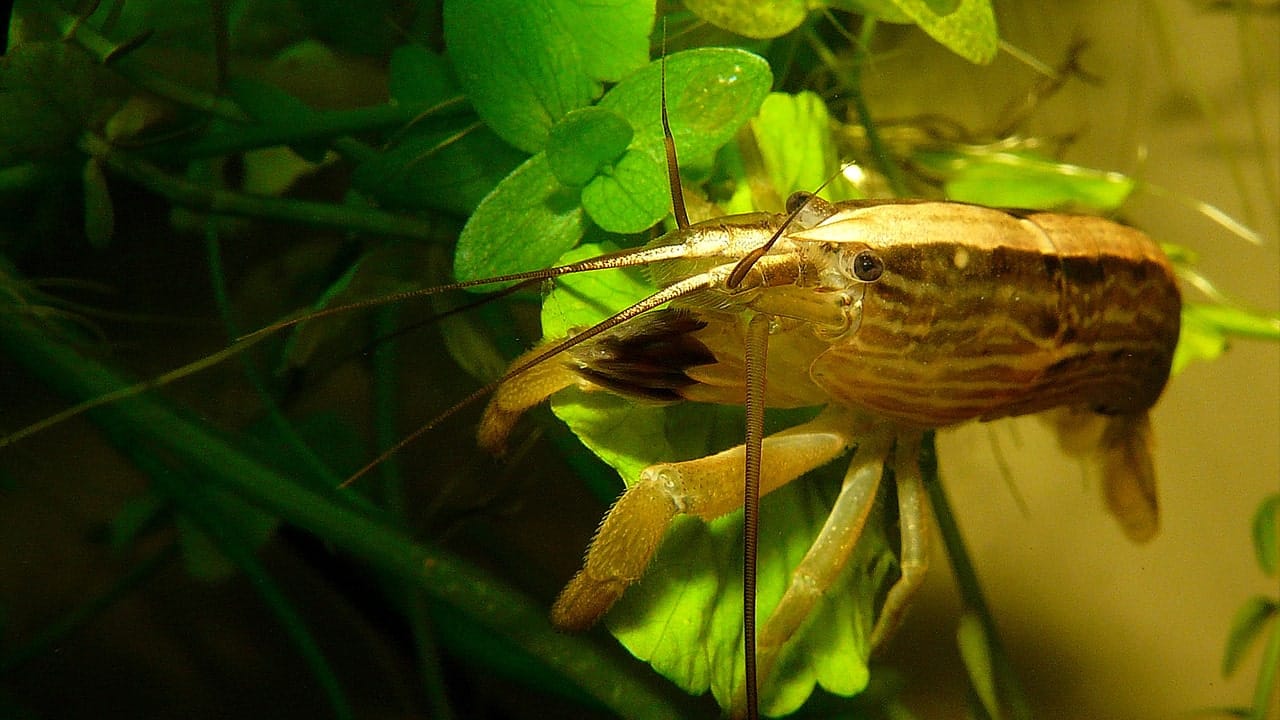Bamboo shrimp is one of the most popular types of shrimp by aquascape fans. The name of this type of shrimp seems very unique because it is taken from the distinctive appearance of this shrimp which resembles a bamboo stick. On the body of this shrimp, there is a distinctive motif that is patterned like bamboo, the color and shape are also similar to bamboo, so it’s not surprising that this shrimp is named after bamboo.
Bamboo shrimp can be an addition to your aquascape if you desire additional animals that are not only captivating but can also transform the environment in your aquascape to be much better. Check out various explanations about the species and care guide of this shrimp below.
Table of Contents
Species Overview
Bamboo shrimp is one type of shrimp that is quite underrated. Although they are quite popular, not so many people keep this shrimp in their aquascape, even though this shrimp is a very low maintenance and peaceful shrimp. Moreover, the very beautiful motif brings a new color to the life of the tank.
This type of shrimp is also suitable for those of you who want a clean tank without spending maximum effort because these animals can help you eat some unwanted algae in the tank. Before we discuss further the care guide for bamboo shrimp, here is an overview of some things you should know before you raise this type of shrimp.
| Species Name | Bamboo Shrimp |
| Other Names | Rock Shrimp, Wood Shrimp, Flower Shrimp, Fan Shrimp, Asian Filter Feeding Shrimp, Singapore Flower Shrimp, Singapore Shrimp |
| Scientific Name | Atyopsis Moluccensis |
| Family | Atyidae |
| Size | Up to 3 inches |
| Lifespan | 1 – 2 years |
| Origin | Southeast Asia (Indonesia, Sri Lanka, Okinawa, Malaysia, Thailand, Philippines) |
| Care Level | Easy – Low Maintenance |
| Temperament | Peaceful |
| Compatibility | Community Fish |
| Diet | Organic matter and organisms (microalgae or plant matter) |
| Breeding | Egg layer |
| Minimum Tank Size | 20 gallons (76 L) |
| Water Temperature | 23-29 deg C (73-84 deg F) |
| Water Hardness | 3-12 dGH |
| Water PH Level | 7.0 – 7.5 |
| Tank Conditions | Tropical freshwater |
Natural Habitat and Origin

Knowing the original habitat of this shrimp is one of the main elements in a care guide that you must understand well. The typical bamboo fish is very easy to find in various freshwater in Southeast Asia, as stated in the overview above.
This type of shrimp likes waters that have high water velocity. In addition, it would be better to add a coarse substrate such as cobbles or boulders because they like such habitats. They are usually found living under rock formations in fast-current water.
For this reason, it would be better for you to provide an environmental tank with running water and have lots of rocks or hiding spots in it. Adding aquatic plants can also be a very good addition as a hiding place and food source for this shrimp.
Organic matters from aquatic plants are the favorite food of bamboo shrimp, just like in their natural habitat. But don’t worry, the various ornamental plants that you put in your tank will not be disturbed or eaten because they only digest organic matter or residue that has broken off from the plant, not the plant directly.
Tank and Water Parameters
The minimum tank size that you have to prepare if you want to keep bamboo shrimp is around 20 gallons or about 76 liters. This size is the minimum tank size that you must prepare per individual shrimp. So if you want to keep more than one shrimp, you can just multiply it.
Try to use a tank that is long compared to a deep one, because this will present a much better water current. In addition, using a tank with an elongated shape also provides more surface space for the shrimp to explore.
For the condition of the water that you have to provide in the tank, you have to pay attention to it in great detail. Although they are relatively easy to maintain and do not require intensive attention, the state of the water can greatly determine the activity and health of this type of shrimp.
In accordance with the overview discussed above, the water temperature in your tank should be around 70°F to 78°F. In addition, the pH level should not be less than 6.5 or more than 8, and the water hardness should be only ranged from 3 to 10 dKH.
To maintain the stability of the ecosystem in the tank and also the condition of the shrimp, it is important for you to keep checking these water parameters regularly. A sudden drastic change that can result in a health issue in bamboo shrimp which results in the shrimp not being able to survive, especially if they are newly placed in the tank.
General Behavior
Bamboo fish is a type of shrimp that is very easy to maintain. They will usually perch on rocks or plants in your tank to filter out any small organic matter or algae present, and eat them.
At the beginning of maintenance, when just put into the tank, these shrimp may be shy, hide a lot, and live in hidden places in your tank. They may also not move around much or eat when they are placed in a new environment.
However, this does not need to be a matter of worry, this is the normal behavior of the shrimp. They are trying to adapt to a new environment. When they are familiar with their new environment, they will begin to move a lot more during the day.
Even though it is quite peaceful and rarely moves a lot, you still have to use a lid to cover your tank when keeping the bamboo shrimp. They have a unique habit of escaping the tank when they are stressed. Not only if they are stressed, if they are bored, they can escape the tank to find a new pond around them.

How To Feed Bamboo Shrimp
Several other types of dwarf shrimp may be fed with shrimp pellets, but not with bamboo shrimp. They eat small food particles obtained from food from other fish or various organic substances that are usually found in the tank environment. You can add pond plankton, small worms, finely crushed food flakes, and various other small particle foods.
Even so, you still have to provide powdered food as additional nutrients and vitamins so that the bamboo shrimp you raise can thrive.
Oak or almond leaves are also one of the plant choices that you can add to your tank if you keep this type of shrimp. This plant will help to improve water quality to match the ideal habitat for these shrimp.
Because of their small size, the bamboo shrimp may not be able to compete with other animals in the tank. In some cases, these shrimp are also often accidentally eaten by fish in the tank when they are digesting their food. So it would be better if you feed this shrimp only at night when the fish or other inhabitants are sleeping.
Feeding bamboo shrimp at night will avoid the possibility of this shrimp not getting enough food. In addition, another thing that you should pay attention to is to use the target feeding system when spreading the food for the shrimp. Target feeding using a syringe will not only make it easier for you to feed them but will also prevent them from being overfed.
Breeding Guide
Before discussing the breeding method of this shrimp, you must first know about the differences between female and male species. There are 3 aspects that you must pay attention to distinguish the gender of this beautiful creature.
The first aspect is the size of the body. Usually, the body of an adult bamboo shrimp male is larger than the female, so this aspect can be one of the easiest aspects you can use to determine the gender of this shrimp.

In addition, you can also see if there is a first pair of legs that is larger than the other legs on the shrimp. The male shrimp have the first pair of legs which are significantly larger than the other pairs of legs on their bodies, while the female one has the same-sized walking legs.
The last one is the sexual openings which you can see behind the body of the shrimp. The female shrimp has a small opening called Gonopore at the base of the third pair of their bodies, while the male one has an opening at the fifth pair.
The bamboo shrimp may be easy to maintain, but for the breed, it is a very difficult thing to do. When they are mature enough, they do not require intensive care, but it is the unique breeding characteristics of these shrimp that make them very difficult to breed.
In their natural habitat, the larvae or eggs that have been released by the adult will be carried by the current to brackish or salt water. The larvae that have hatched can only survive in salty water, and will not be able to develop at all in freshwater.
In this saltwater habitat, they will develop through several stages before finally becoming individual shrimplets (small shrimp) that can live again in freshwater. The problem is, the adult bamboo shrimp cannot live at all in the saltwater aquarium, so it will be very difficult to breed this bamboo fish. The process of laying eggs flowing into saltwater must be done slowly, as happens in natural habitats.
In addition, the larvae experience many stages that require different care and food according to the stages. This is what makes this type of shrimp very difficult to breed by human assistance. However, if you are really interested in trying to breed a new generation of your own bamboo shrimp, then you can check out various complete and precise tutorials that you can see on the internet.
Things You Should Avoid
The 2 main problems that make bamboo shrimp unable to survive are changes in water parameters and copper around the shrimp. If earlier we discussed the ideal water parameters for this shrimp, then you must continue to maintain its condition to match these parameters.
In addition to the problem of water parameters, copper material is one of the biggest issues for the health of this shrimp. Pay attention to not using items or materials that contain copper in the tank. The smallest amount of copper that dissolves in the water tank will be able to make this shrimp to be poisoned.
This is very important to note because there are a lot of foods or medications for other tank animals that contain copper in them. So if you want to provide material that contains copper, first separate this shrimp from the tank. When you want to bring the shrimp into the tank again, make sure that the copper solution that was previously in the tank is completely clean.
Bamboo Shrimp Tank Mates
This type of shrimp will not cause many problems when placed in the same tank with other organisms or animals. However, make sure not to put fish that eat small shrimp in the tank.
Ideally, you can keep a group of four other animals in the tank along with the bamboo shrimp. You can keep snails, other dwarf shrimps, or various non-aggressive fishes. Some recommended species that you can put as tank mates for this shrimp include White Wizard Snails, Cherry Shrimp, Sparkling Gourami, Blue Velvet Shrimp, and many others.
Should You Get Bamboo Shrimp?
Bamboo shrimp is one type of dwarf shrimp that is very easy to maintain, and you can add them to your aquarium ecosystem. It is relatively easy to care for and the beautiful coloration is one of the reasons why many aquascape enthusiasts keep these shrimp in their tanks.
When raising these shrimp, the most important thing is to create an ideal habitat, similar to the original habitat of this shrimp. Check regularly the water parameters that suit this shrimp.
Provide lots of plants, stones, or driftwoods in the tank that can be a source of food for the shrimp. It would be highly recommended to provide additional food in the form of supplement powder and vitamins which are given by syringe to avoid being overfed. And do not use copper in the tank, because it will be very poisonous for the bamboo shrimp.






